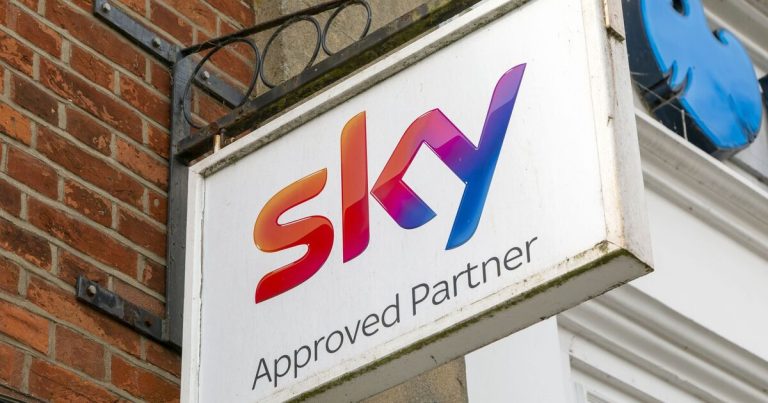

Over 30 savings providers slash interest after Bank of England base rate cut (Image: Getty)
More than 30 banks and building societies have slashed interest on savings accounts following the Bank of England base rate cut last week.
Providers lowered rates on at least one product, with some making multiple reductions of up to 0.31%, according to new figures from Moneyfactscompare.
Rachel Springall, finance expert at Moneyfactscompare, said: “It’s so disheartening to see savings rates chopped in the last few days, but it just proves why savers are at the mercy of base rate cuts.
“Not even challenger banks have been able to escape making cuts as the market sentiment for lower interest rates has taken charge.”
The Bank of England reduced its base rate to 4.5% from 4.75% last Thursday.
READ MORE: Major bank launches sub 4% interest mortgages in start of potential ‘price war’

The Bank of England cut central interest rates by 0.25% last week (Image: Getty)
Skipton Building Society reduced interest rates on variable accounts by up to 0.30% on the same day, as did West Brom Building Society, which cut rates by up to 0.31%.
Barclays, one of the ‘Big Five’ high street banks, is the latest provider to respond, announcing it will cut the interest rate on its Everyday Saver from 1.5% to just 1.25% from Thursday – well below the central interest rate.
Barclays’ rate cuts reflect a broader trend among the Big Five banks – HSBC, NatWest Group, Santander, and Lloyds Banking Group – which have been slow to pass on base rate increases but quick to implement reductions, resulting in particularly low savings rates.
While many providers raised interest rates when the Bank of England pushed rates as high as 5.25%, the UK’s biggest banks generally remained in the lower quartiles of the market. Currently, the average easy access savings rate among the Big Five is just 1.44%.
In contrast, challenger bank Chase is offering the highest rate in the easy access savings market at 5%. Savers failing to cash in on these top rates could be missing out on hundreds of pounds worth of returns.

Challenger bank Chase is offering the highest rate in the easy access savings market at 5% (Image: Getty)
With the Bank of England forecasting inflation to reach up to 3.7% in the summer, savers are being urged to look for more competitive returns if they haven’t already.
Alastair Douglas, CEO of TotallyMoney, said: “If you have any savings, then it’s worth setting a regular reminder to double-check the interest rate terms. That’s because some banks are paying well below the rate of inflation, meaning your spending power is reducing as the cost of living increases.”
“The average saver could bank more than £800 in interest compared to just £250 with an average account from one of the Big Five banks.”
With up to £85,000 of UK savers’ money protected per bank, building society, or credit union under the Financial Services Compensation Scheme, Mr Douglas added: “Keep an open mind and consider smaller or newer banks and building societies.
“They’ll often offer some of the best rates in a bid to try and win customers from the big high street providers. Loyalty doesn’t pay, but moving your savings can.”
Andrew Hagger, personal finance expert at Moneycomms, said: “It’s quick and easy to open a new savings account online these days, so I’d recommend that savers check the rate they are currently earning and if it’s lagging behind the market then move it and boost your interest income.”
In 2024, data from the Bank of England showed as much as £252billion was sitting in UK current or savings accounts, earning no interest at all.
Mr Hagger added: “There’s still way too much money sitting in poor paying accounts, if consumers don’t act and switch to something better they are simply allowing their bank to profit at their expense.”
While savers are facing lower returns on their deposits, mortgage holders are seeing some positive changes as lenders cut rates on new deals.
Some lenders are offering sub-4% mortgage rates for the first time since November.
Santander UK is set to launch two- and five-year fixed mortgage deals at 3.99% for 60% Loan to Value (LTV) customers this week. The bank also reduced rates by up to 0.40% on more than 80 other mortgage products.
Barclays has followed suit this week with the announcement of a new 3.99% deal on a five-year fixed rate, 60% LTV.
Lenders are passing on lower swap rates, which are currently just below 4% for two- and five-year fixed-rate mortgages. Swap rates are the interest rates lenders pay to financial institutions to secure fixed-rate funds. As swap rates fall, lenders are able to offer lower fixed mortgage rates to customers.
David Hollingworth, associate director at L&C Mortgages, said: “The improvement in the rate of inflation last month and recent rate cut seems to have reversed market anxiety about whether rates may have to stay higher for longer.

Santander UK is set to launch two- and five-year fixed mortgage deals with sub-4% interest this week (Image: Getty)
“That has been feeding through to mortgage rates in the last week and underlines gradual improvement in the market as fixed rates begin to ease back.”
Stephen Perkins, managing director at Yellow Brick Mortgages suggested the new competition could mark the start of a new mortgage rate war.
He said: “It took longer than expected for lenders to cut their rates after the Bank of England rate reduction. However, with Santander and Barclays now competing with headline fixed rates below 4%, the first volleys in a new rate war may be underway.
“This signals positive news and will increase confidence to potential homebuyers and movers.”
Rohit Kohli, director at The Mortgage Stop pointed out that the focus on lower LTV customers – who have larger deposits to put down – means the “real affordability challenge” remains unaddressed.
He said: “While it’s encouraging to see lenders passing on lower swap rates, the most significant impact would come from more competitive high LTV deals that help first-time buyers get on the property ladder.
“Until we see movement in that space, many aspiring homeowners will continue to struggle with affordability.”
Nicholas Mendes from independent mortgage adviser John Charcol suggested that current swap rates may limit further rate cuts from other lenders.
He said: “Currently, two- to five-year swap rates are below 4%, a notable decline compared to last month. However, with two-year swaps priced only marginally below this level, there is limited scope for other lenders to follow suit comfortably.
“As such, I don’t expect many competitors to replicate this move. Without wider market support, this deal is unlikely to remain available for long, so it’s worth acting swiftly when opportunities like this arise.”
Top five easy access savings accounts
At the time of writing, here are the top five easy access savings accounts available, according to Moneyfactscompare.
- Chase – Chase Saver with Boosted Rate – 5.00% AER / 4.89% gross
- Coventry Building Society – Four Access Saver – 4.85% AER/ gross
- Cahoot – Sunny Day Saver – 4.75% AER / gross
- Principality Building Society – Online Bonus Triple Access – 4.70% AER / gross
- Chetwood Bank – Easy Access Savings – 4.66% AER / 4.56% gross.
Bottom five easy access savings accounts
- Lloyds Bank – Easy Saver – 1.15% AER / gross
- Metro Bank – Instant Access Savings Account – 1.15% AER / gross
- Halifax – Everyday Saver – 1.15% AER/ gross
- Santander – Easy Access Saver – 1.20% AER / gross
- Barclays – Everyday 1.25% AER / gross.

Kevin Mountford: “Savers must stay proactive as banks react quickly to rate cut’ (Image: Raisin UK)
COMMENT — Kevin Mountford, Co-founder, Raisin UK
“Following the Bank of England’s recent quarter-point rate cut, it’s no surprise that over 30 banks and building societies have already lowered their savings rates. However, what continues to frustrate many savers is the contrast between how quickly cuts are applied versus the slower pace—if at all—at which rate increases have historically been passed on.
“With the UK operating in a low-rate environment for so long, banks have struggled to boost their bottom line through savings and mortgage products. Now, as rates start to come down, we typically see a familiar pattern: mortgage rates are among the slowest to decrease, while savings rates are among the first to be cut. In contrast, when interest rates were rising, mortgage costs quickly climbed, while savers often had to wait for any meaningful benefit.
“High street banks, which hold the majority of UK savings, frequently offer some of the least competitive rates, such as Barclays’ 1.25% on easy-access savings. For many customers, this means their money isn’t working as hard as it could be.
“However, there are still good opportunities for those willing to shop around. Challenger banks and digital providers continue to offer more attractive rates, with some easy-access accounts still paying upwards of 4%. The key takeaway for savers is that being proactive pays—checking your rate regularly and considering alternative providers can make a real difference to your returns.
“At Raisin UK, we aim to give savers more choice by offering a range of competitive savings accounts in one place. In a changing market, taking control of where you keep your money can ensure you’re getting the best possible return.”







